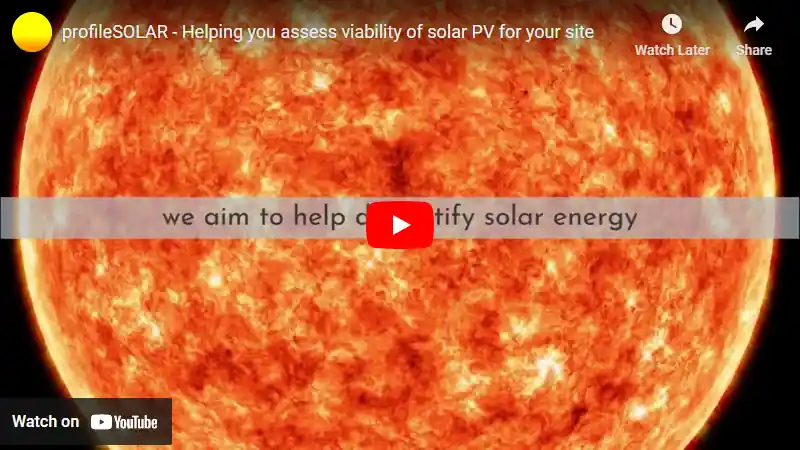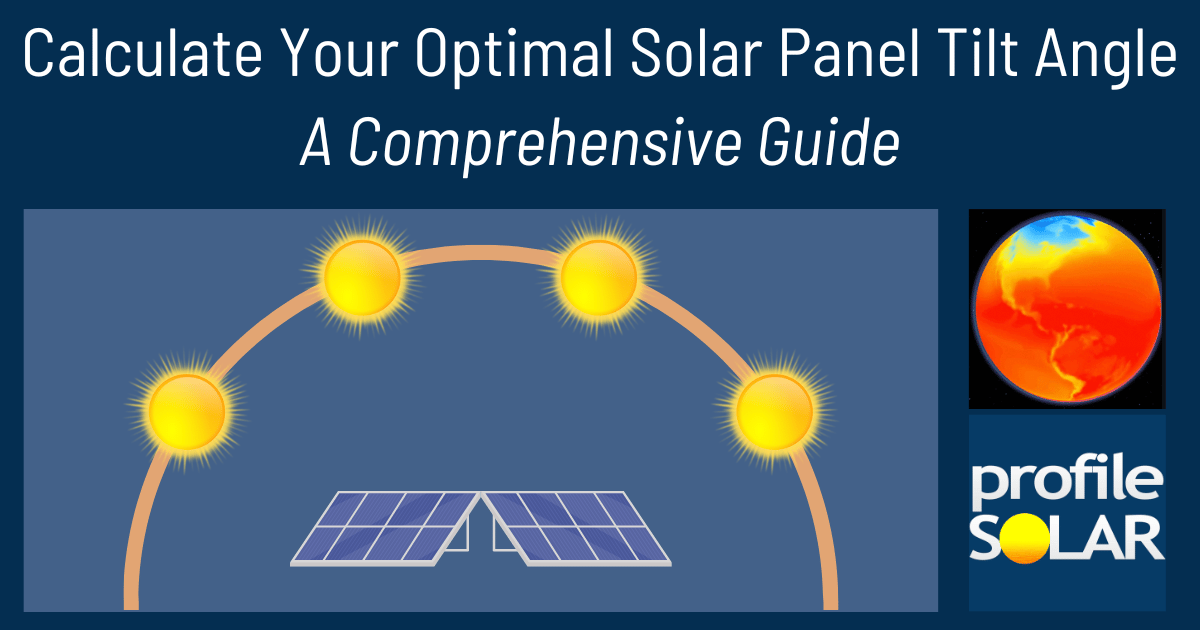

Bloomington, Indiana, located in the Northern Temperate Zone, offers a moderate potential for solar energy generation throughout the year. The city's geographical position at 39.1215° N latitude and -86.5784° W longitude provides varying levels of solar productivity across different seasons.
Seasonal Solar Performance
Solar panel efficiency in Bloomington fluctuates significantly with the changing seasons. Summer stands out as the most productive period, with an average daily output of 6.22 kWh per kW of installed solar capacity. Spring follows closely, generating 5.51 kWh/day. Autumn sees a noticeable decrease in production, averaging 3.74 kWh/day. Winter experiences the lowest output, with only 2.20 kWh/day.Optimal Installation Angle
For fixed panel installations in Bloomington, the ideal tilt angle to maximize year-round solar production is 34 degrees facing South. This angle has been calculated to optimize energy capture across all seasons, taking into account the Earth's elliptical orbit and the city's specific latitude.Peak Generation Periods
The most favorable times for solar energy generation in Bloomington are during late spring, summer, and early autumn. These periods benefit from longer daylight hours and higher sun angles, resulting in increased solar panel efficiency. However, it's important to note that even during the less productive winter months, solar panels can still generate a meaningful amount of electricity.Environmental and Weather Considerations
While Bloomington's climate is generally conducive to solar energy production, there are some factors that could potentially impact solar panel efficiency: 1. Snow accumulation in winter can temporarily reduce panel output, but this can be mitigated by installing panels at the recommended 34-degree angle, which helps snow slide off more easily. 2. Occasional cloudy days, particularly in winter and early spring, may reduce solar productivity. However, modern solar panels can still generate some electricity even in overcast conditions. 3. Tree cover in some areas of Bloomington might cast shadows on panels, reducing their efficiency. Careful site selection and tree trimming can help maximize sun exposure. To address these factors, consider the following preventative measures: - Regular panel cleaning to remove any debris or snow - Using micro-inverters or power optimizers to minimize the impact of partial shading - Conducting a thorough site assessment to ensure optimal panel placement Overall, while Bloomington may not have the ideal year-round solar conditions of more southern locations, it still offers a viable opportunity for solar energy generation, particularly during the spring and summer months.Note: The Northern Temperate Zone extends from 35° latitude North up to 66.5° latitude.
So far, we have conducted calculations to evaluate the solar photovoltaic (PV) potential in 3041 locations across the United States. This analysis provides insights into each city/location's potential for harnessing solar energy through PV installations.
Link: Solar PV potential in the United States by location
Solar output per kW of installed solar PV by season in Bloomington, Indiana
Seasonal solar PV output for Latitude: 39.1215, Longitude: -86.5784 (Bloomington, Indiana, United States), based on our analysis of 8760 hourly intervals of solar and meteorological data (one whole year) retrieved for that set of coordinates/location from NASA POWER (The Prediction of Worldwide Energy Resources) API:




Ideally tilt fixed solar panels 34° South in Bloomington, Indiana, United States
To maximize your solar PV system's energy output in Bloomington, Indiana, United States (Lat/Long 39.1215, -86.5784) throughout the year, you should tilt your panels at an angle of 34° South for fixed panel installations.
As the Earth revolves around the Sun each year, the maximum angle of elevation of the Sun varies by +/- 23.45 degrees from its equinox elevation angle for a particular latitude. Finding the exact optimal angle to maximise solar PV production throughout the year can be challenging, but with careful consideration of historical solar energy and meteorological data for a certain location, it can be done precisely.
We use our own calculation, which incorporates NASA solar and meteorological data for the exact Lat/Long coordinates, to determine the ideal tilt angle of a solar panel that will yield maximum annual solar output. We calculate the optimal angle for each day of the year, taking into account its contribution to the yearly total PV potential at that specific location.

Seasonally adjusted solar panel tilt angles for Bloomington, Indiana, United States
If you can adjust the tilt angle of your solar PV panels, please refer to the seasonal tilt angles below for optimal solar energy production in Bloomington, Indiana, United States. As mentioned earlier, for fixed-panel solar PV installations, it is optimal to maintain a 34° South tilt angle throughout the year.
| Overall Best Summer Angle | Overall Best Autumn Angle | Overall Best Winter Angle | Overall Best Spring Angle |
|---|---|---|---|
| 23° South in Summer | 43° South in Autumn | 53° South in Winter | 32° South in Spring |
Our recommendations take into account more than just latitude and Earth's position in its elliptical orbit around the Sun. We also incorporate historical solar and meteorological data from NASA's Prediction of Worldwide Energy Resources (POWER) API to assign a weight to each ideal angle for each day based on its historical contribution to overall solar PV potential during a specific season.
This approach allows us to provide much more accurate recommendations than relying solely on latitude, as it considers unique weather conditions in different locations sharing the same latitude worldwide.
Calculate solar panel row spacing in Bloomington, Indiana, United States
We've added a feature to calculate minimum solar panel row spacing by location. Enter your panel size and orientation below to get the minimum spacing in Bloomington, Indiana, United States.
Our calculation method
- Solar Position:
We determine the Sun's position on the Winter solstice using the location's latitude and solar declination. - Shadow Projection:
We calculate the shadow length cast by panels using trigonometry, considering panel tilt and the Sun's elevation angle. - Minimum Spacing:
We add the shadow length to the horizontal space occupied by tilted panels.
This approach ensures maximum space efficiency while avoiding shading during critical times, as the Winter solstice represents the worst-case scenario for shadow length.
Topography for solar PV around Bloomington, Indiana, United States
The topography around Bloomington, Indiana, is characterized by its location in the rolling hills of southern Indiana. The city itself sits in a valley surrounded by gentle slopes and wooded areas. The landscape is part of the larger physiographic region known as the Norman Upland, which features a mix of forested hills, limestone outcrops, and fertile valleys. To the west and southwest of Bloomington, the terrain becomes more rugged as it transitions into the Crawford Upland. This area is marked by steeper hills, deeper valleys, and more pronounced limestone formations. The eastern and southeastern parts of the region gradually flatten out towards the Scottsburg Lowland, where the landscape becomes more suitable for agriculture.
Potential Areas for Large-Scale Solar PV
When considering areas near Bloomington for large-scale solar photovoltaic (PV) installations, several factors come into play. The most suitable locations would be relatively flat, open areas with good sun exposure and minimal shading from trees or hills. The areas to the east and southeast of Bloomington, where the terrain begins to level out, would likely be the most appropriate for large-scale solar PV projects. These areas offer more expansive, open spaces that could accommodate sizeable solar arrays. The flatter topography also means less earthwork would be required for installation, potentially reducing costs. Another potential area for solar development could be reclaimed agricultural land or former industrial sites. These locations often provide large, open spaces with existing infrastructure that could be repurposed for solar energy production. It's important to note that while the immediate vicinity of Bloomington may have limited suitable areas due to its hilly nature and forest cover, expanding the search radius to neighboring counties could reveal more promising sites for large-scale solar PV installations. Any specific site selection would require detailed surveys and environmental assessments to ensure optimal placement and minimal impact on local ecosystems.United States solar PV Stats as a country
United States ranks 2nd in the world for cumulative solar PV capacity, with 95,209 total MW's of solar PV installed. This means that 3.40% of United States's total energy as a country comes from solar PV (that's 26th in the world). Each year United States is generating 289 Watts from solar PV per capita (United States ranks 15th in the world for solar PV Watts generated per capita). [source]
Are there incentives for businesses to install solar in United States?
Yes, there are several incentives for businesses wanting to install solar energy in the United States. These include federal tax credits, state and local rebates, net metering policies, and renewable energy certificates (RECs). Additionally, many states have enacted legislation that requires utilities to purchase a certain amount of electricity from renewable sources such as solar.
Do you have more up to date information than this on incentives towards solar PV projects in United States? Please reach out to us and help us keep this information current. Thanks!
Citation Guide
Article Details for Citation
Author: Aaron Robinson
Publisher: profileSOLAR.com
First Published: Thursday 21st of November 2024
Last Updated: Saturday 23rd of November 2024
Tell Us About Your Work
We love seeing how our research helps others! If you've cited this article in your work, we'd be delighted to hear about it. Drop us a line via our Contact Us page or on X, to share where you've used our information - we may feature a link to your work on our site. This helps create a network of valuable resources for others in the solar energy community and helps us understand how our research is contributing to the field. Plus, we occasionally highlight exceptional works that reference our research on our social media channels.
Feeling generous?

Share this with your friends!


Compare this location to others worldwide for solar PV potential
The solar PV analyses available on our website, including this one, are offered as a free service to the global community. Our aim is to provide education and aid informed decision-making regarding solar PV installations.
However, please note that these analyses are general guidance and may not meet specific project requirements. For in-depth, tailored forecasts and analysis crucial for feasibility studies or when pursuing maximum ROI from your solar projects, feel free to contact us; we offer comprehensive consulting services expressly for this purpose.
Helping you assess viability of solar PV for your site
Calculate Your Optimal Solar Panel Tilt Angle: A Comprehensive Guide
Enhance your solar panel's performance with our in-depth guide. Determine the best tilt angle using hard data, debunk common misunderstandings, and gain insight into how your specific location affects solar energy production.






